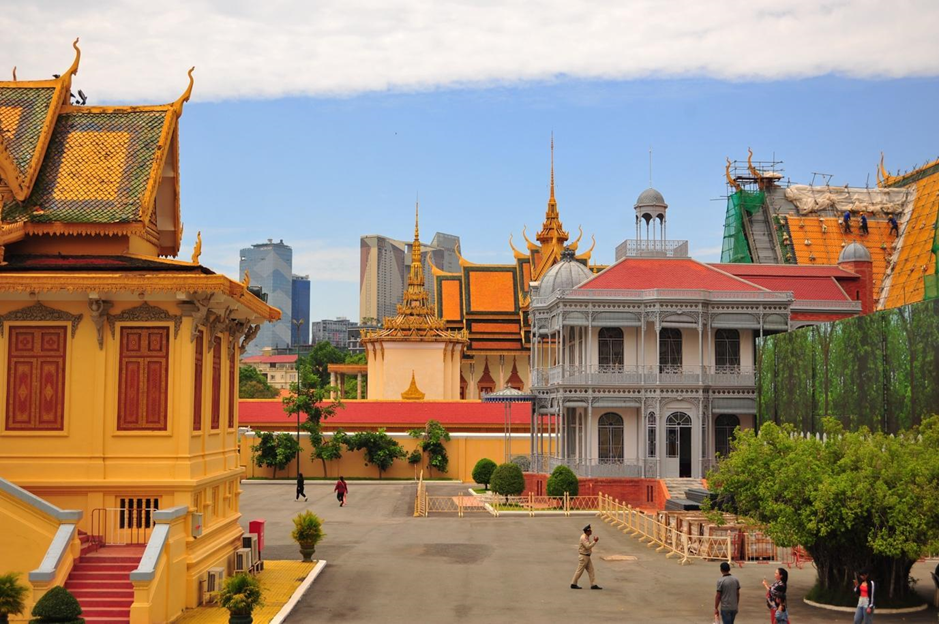The origins of the Thai people: From southern China to their indelible ties with the Khmer Empire
- Christophe Gargiulo

- Jul 30
- 3 min read
The history of the peoples and kingdoms of Southeast Asia is a fascinating melting pot of migrations, cultural exchanges and fierce rivalries. The Thai people and the Kingdom of Siam reveal a rich tapestry of Khmer influence that is still alive and well in the collective memory.

The roots of the Thai people
The Thai people, also known as Tai, trace their origins to southern China, in the Yunnan region. The ancestors of the Thai people settled there in the 1st century BC, but it was not until the 11th century that the first large-scale migrations to the south began, driven by pressure from Chinese powers and the search for new fertile lands. Gradually settling in the Chao Phraya River valley, in the heart of what would become Thailand, these populations assimilated local traditions, influenced by the Mon and Khmer civilisations and by Indian culture brought by Buddhism and Hinduism.
The very etymology of the word Siam comes from the Sanskrit term śyâma, meaning “brown” or “dark” — a name given to them by the Khmers, who then dominated the region. Several other indigenous kingdoms, such as Dvaravati and Srivijaya, also contributed to the blending of the future Thai identity.
The birth and rise of the Kingdom of Siam
While the Khmer Empire was spreading across the Indochinese peninsula, the first independent Thai kingdoms emerged in the 13th century: Sukhothai and Lanna. Then, in 1350, a Thai prince founded the capital of Ayutthaya and inaugurated the Kingdom of Siam, which quickly became the dominant power in the region.
The formation of Siam was not without conflict. Initially a vassal or tributary of the Khmer Empire, the young Thai kingdom asserted itself through conquest. In 1431, Siamese armies took Angkor, the former imposing capital of the Khmer Empire, accelerating the decline of an empire that had been unrivalled until then. Gradually, Siam absorbed Sukhothai and extended its rule over territories that are now Cambodia and Laos.
Siam and the Khmer Empire: heritage and rivalries
The relationship between Siam and the powerful Khmer Empire was initially marked by respect, inspiration and alliances, but also by armed struggles for regional supremacy. When they arrived on the scene in the Mekong Basin, the Thais adopted many Khmer traits: administrative organisation, architecture (as evidenced by the impressive temples of the Ayutthaya period), language and court arts. Theravada Buddhism, imported from the Khmer Empire and the Mon people, quickly replaced Hinduism and definitively shaped the soul of Siam.
However, the fall of Angkor marked a turning point: Siam took over political and economic centrality, while Cambodia sank into an era of decline and isolation, subject to alternating Siamese and Vietnamese influence. This unstable historical context led to profound cultural and social transformation.
The Cambodian elites, once powerful and independent, saw their power gradually weaken, while the rural population struggled to preserve their traditions in the face of foreign domination.
Despite this, the resilience of the Cambodian people was evident in the continuity of religious and artistic practices, which remained an essential pillar of their identity. It was not until the 20th century, with the emergence of Cambodian nationalism and independence movements, that the country began to gradually regain its voice on the regional stage, opening a new chapter in its history.
An intertwined cultural heritage
Far from being monolithic, Thai identity is the heir to multiple cultural currents—Chinese, Indian, Mon, Khmer—which are revealed in writing, religion, the arts, and the very conception of royal power. Even today, place names, gastronomy, and ritual practices bear witness to this original melting pot.
The ties that unite Siam and the Khmer Empire are thus part of a past marked by conquests, mutual influences and cultural cross-fertilisation, the richness of which still shines today, from Bangkok to Phnom Penh, from Sukhothai to Angkor.







Maxxron Oils are top-tier Engine Oil Manufacturer that provide the best possible protection, efficiency, and life span for the engine. The application of new generation additives along with technical innovations has created Maxxron Oils that lower friction, cut wear and even help the engine consume less fuel. No matter if it is a car, bike or a heavy-duty rig, Maxxron is there to offer unchanging trustworthiness and soft weaving in every type of road circumstance. Car engine Oil
I've been trying to find a working Jalwa game gift code for a while now, but it's like they're a myth! I wish the developers would release more of them or at least have a clearer system for how to get one.
I've been trying out the Jalwa game online, and the variety of games is great, but I'm a bit concerned about the 'color prediction' and 'lottery' aspects. It feels more like a betting platform than a traditional game.